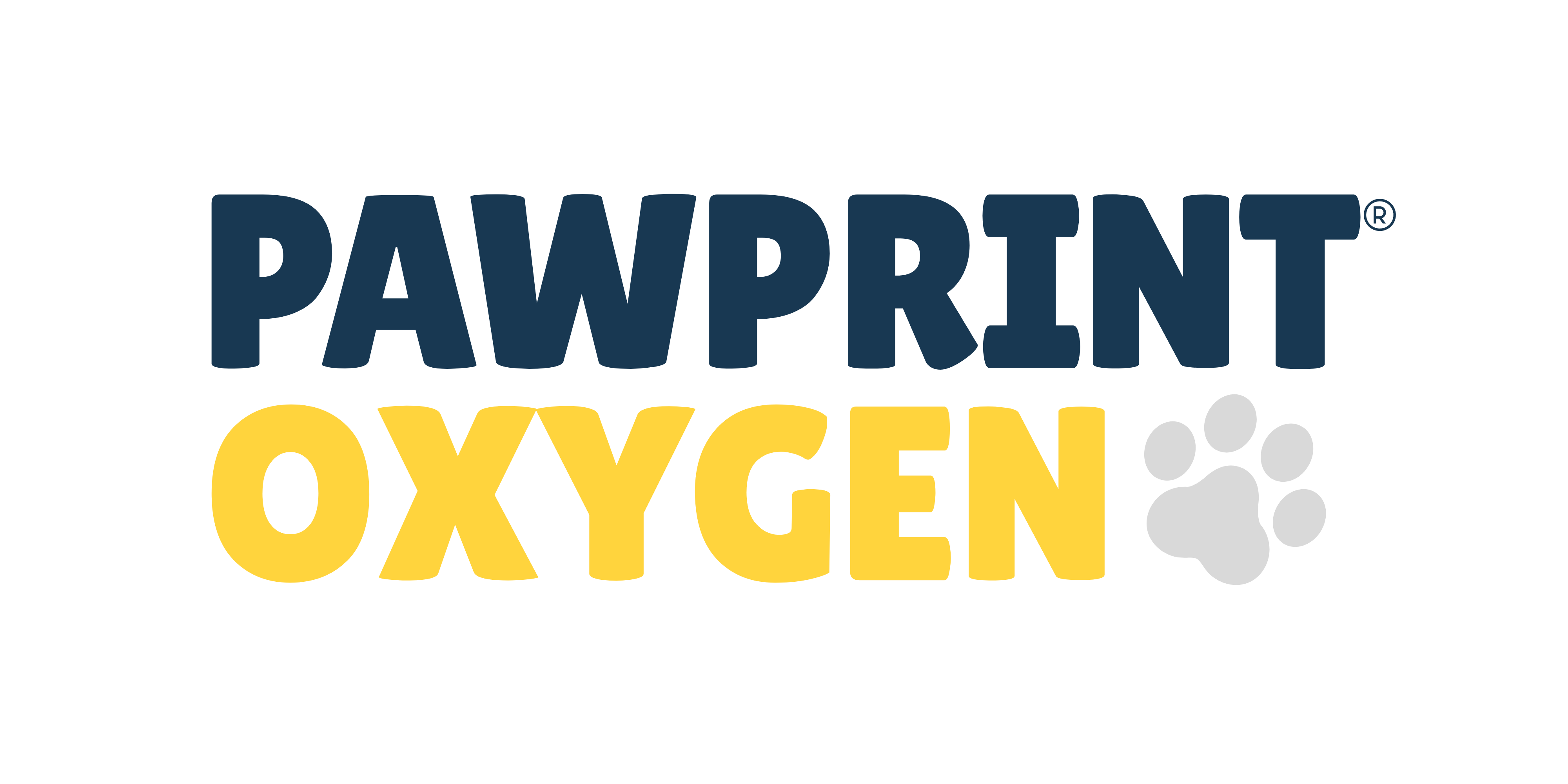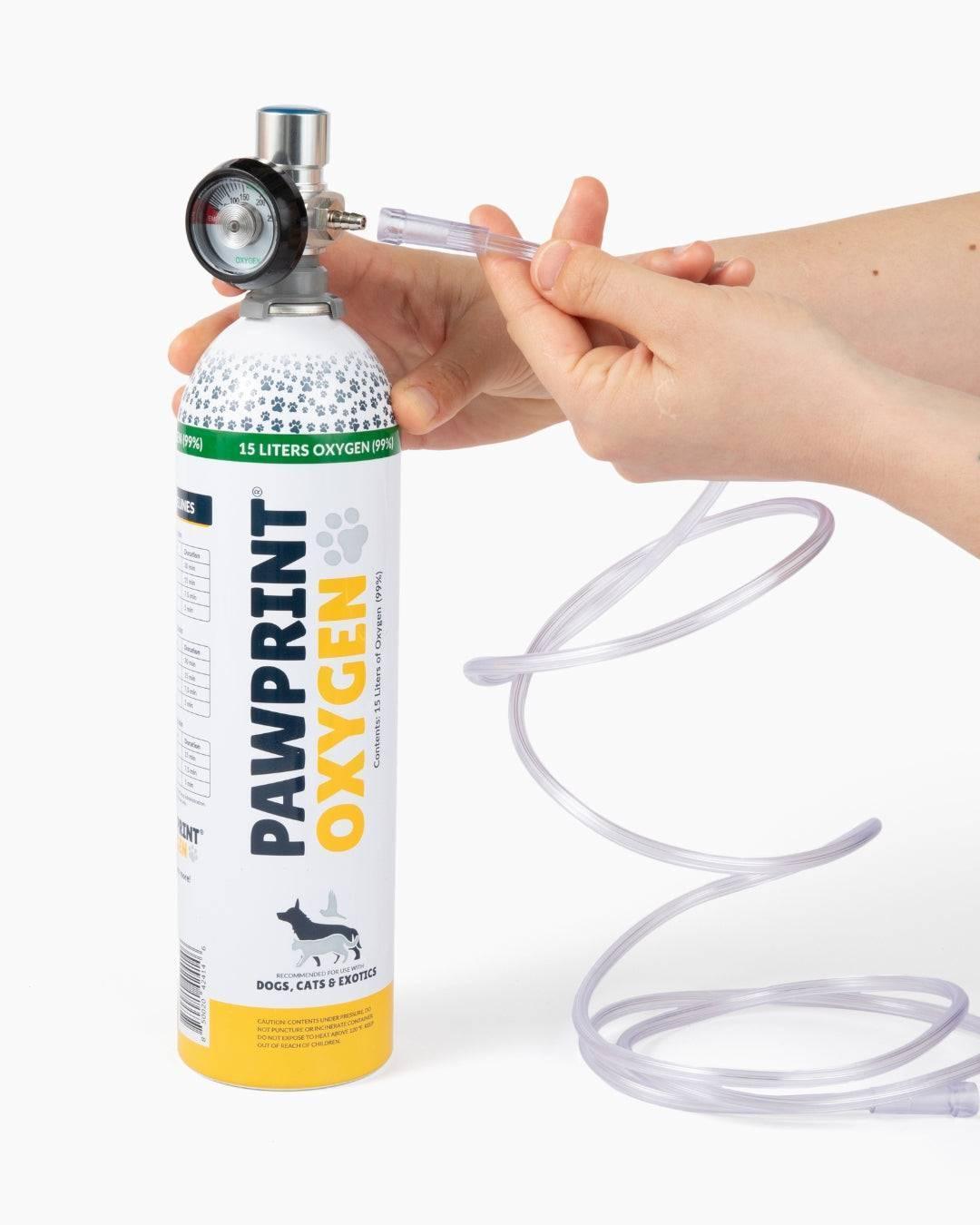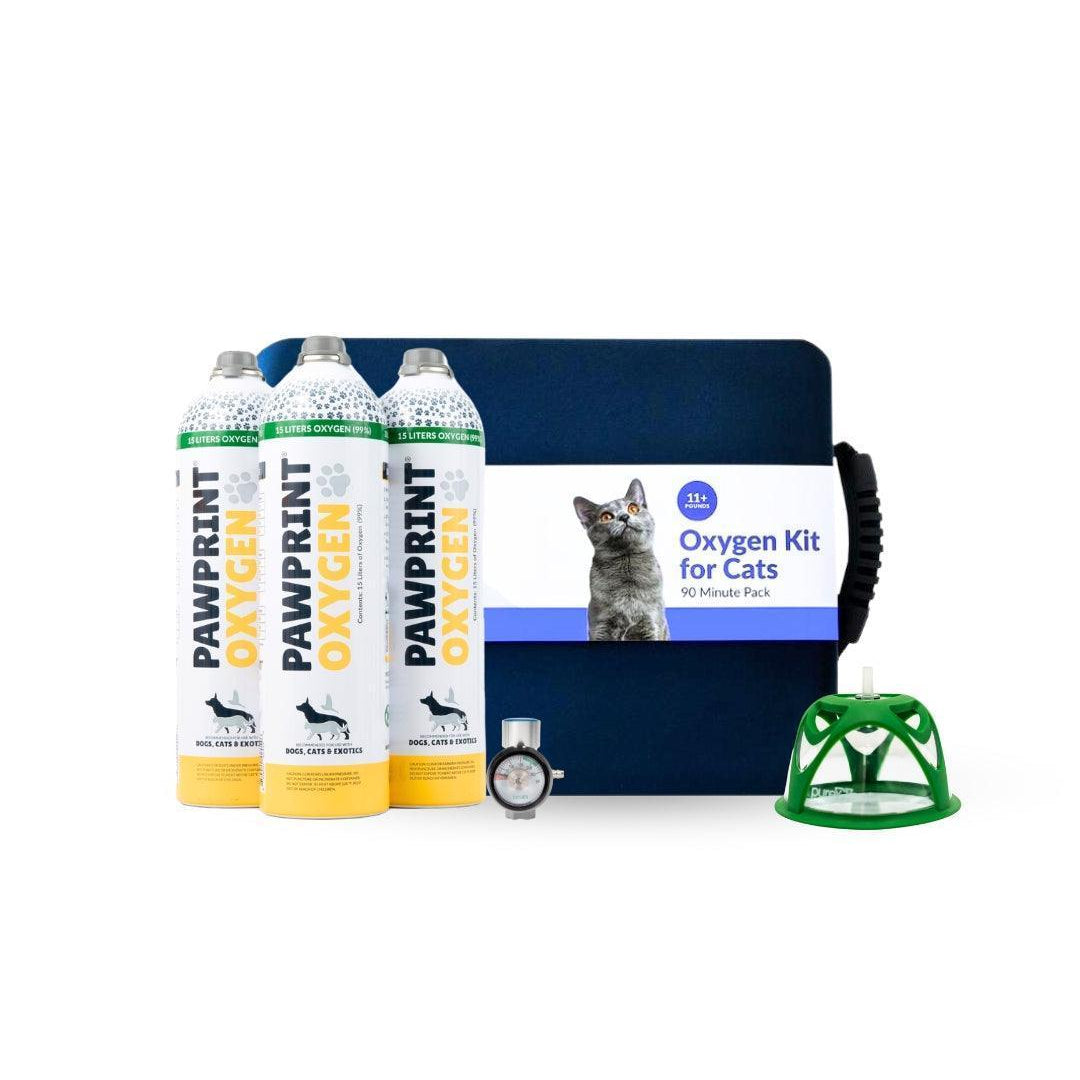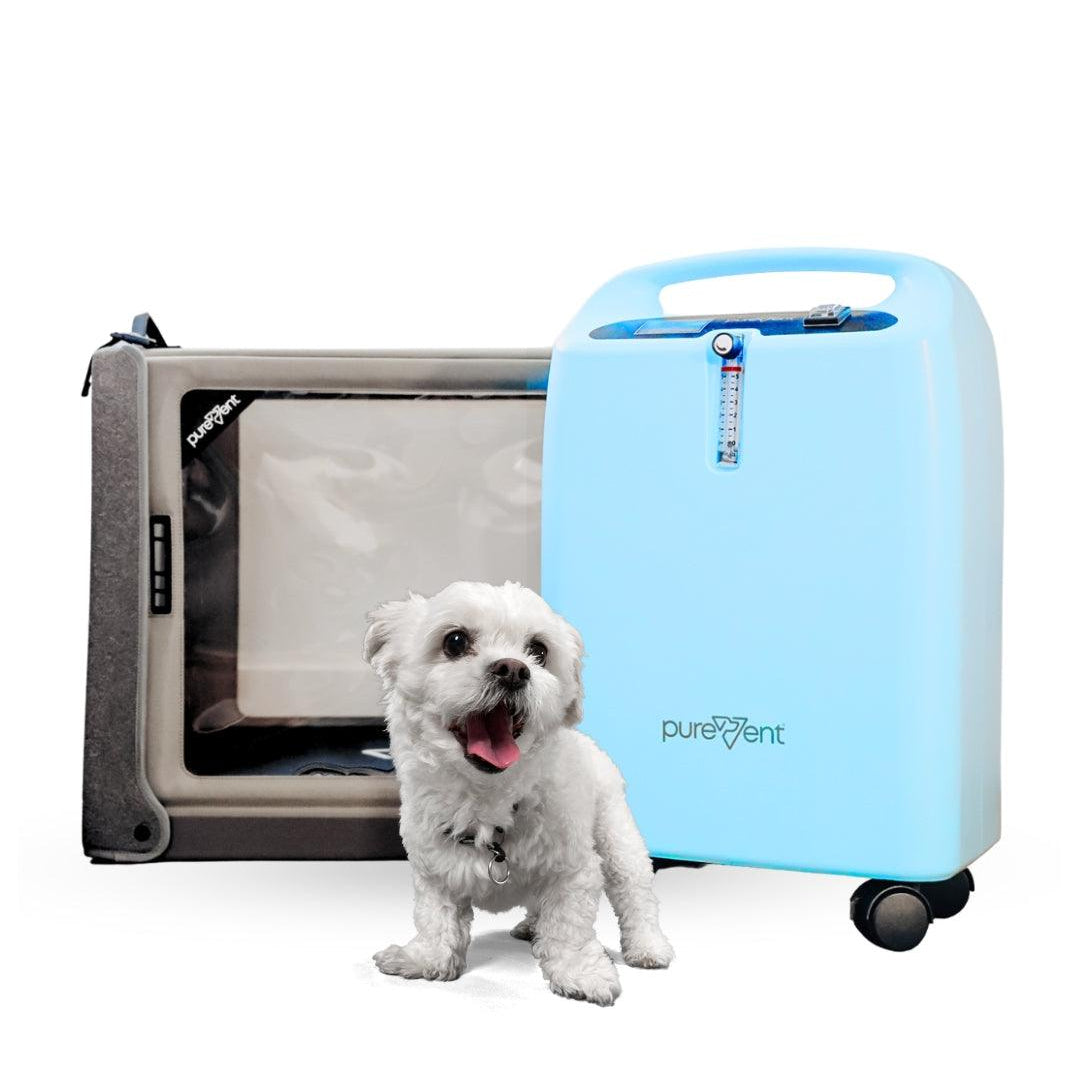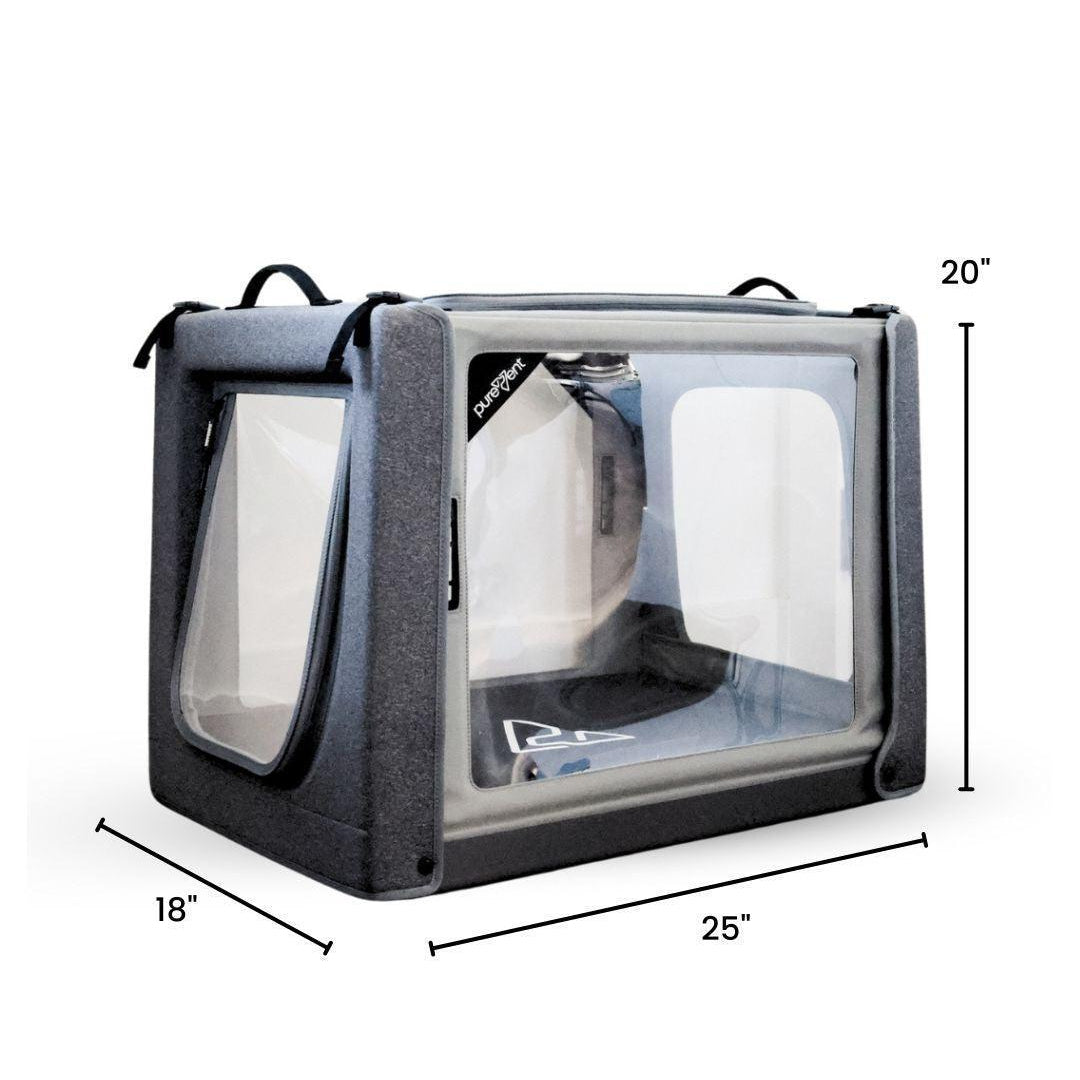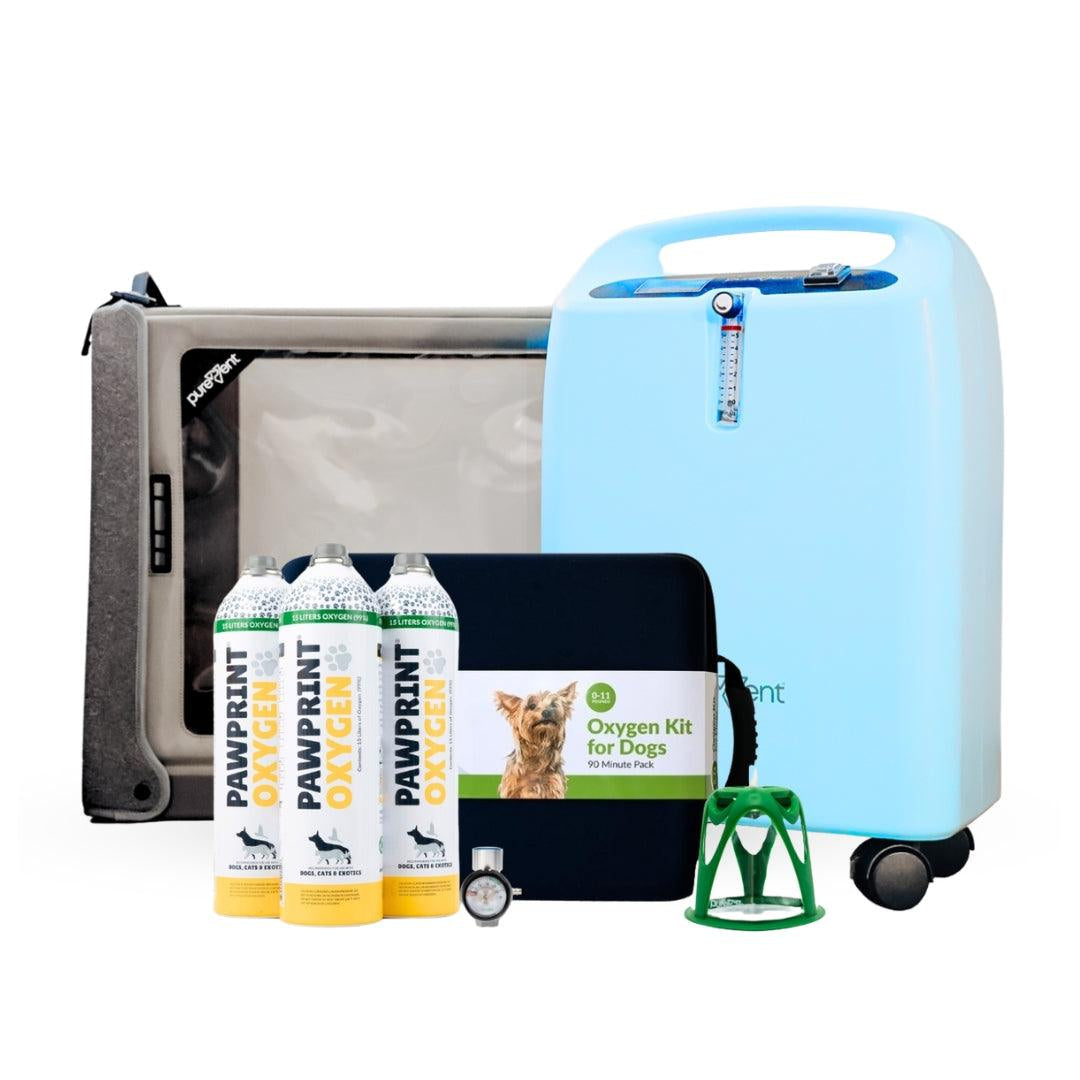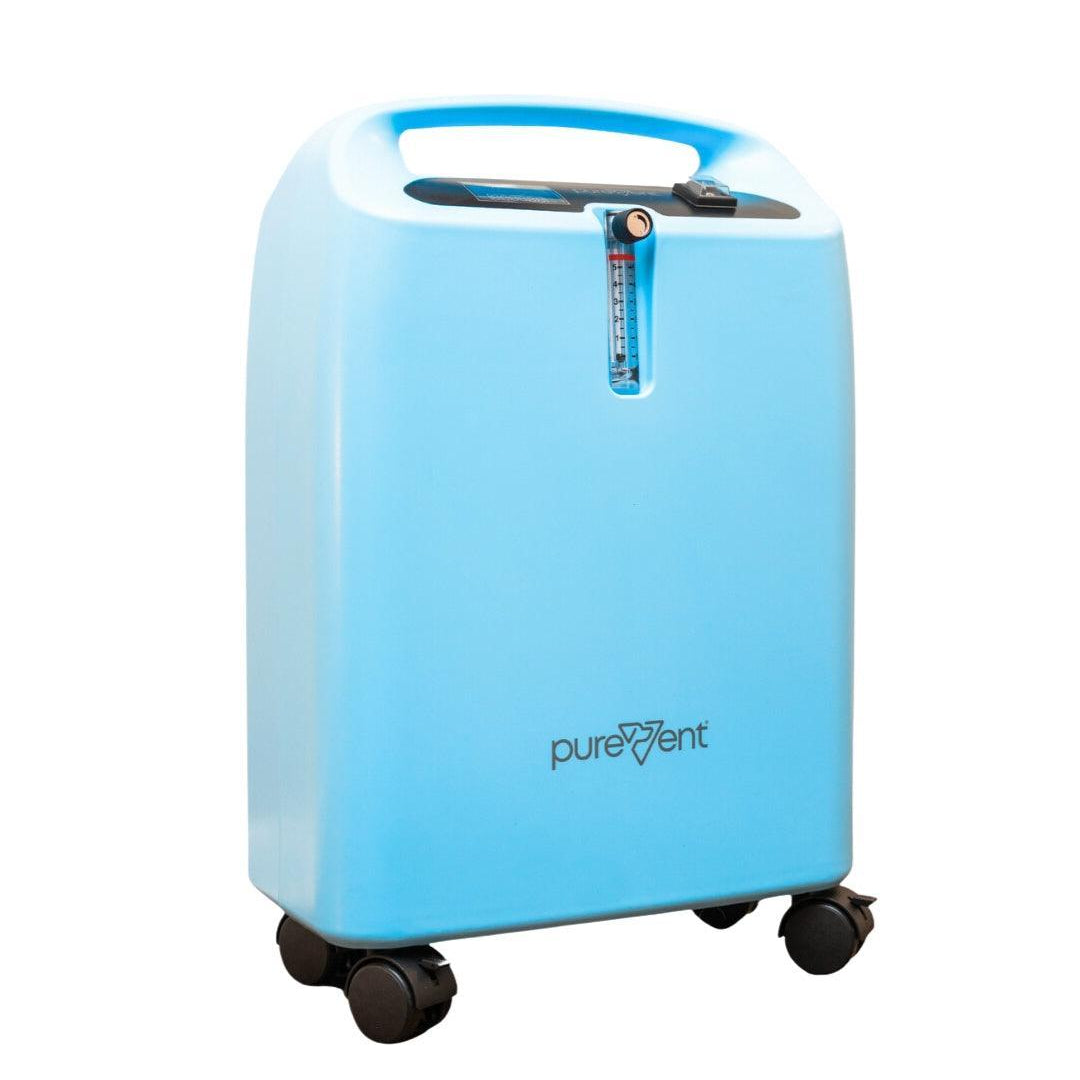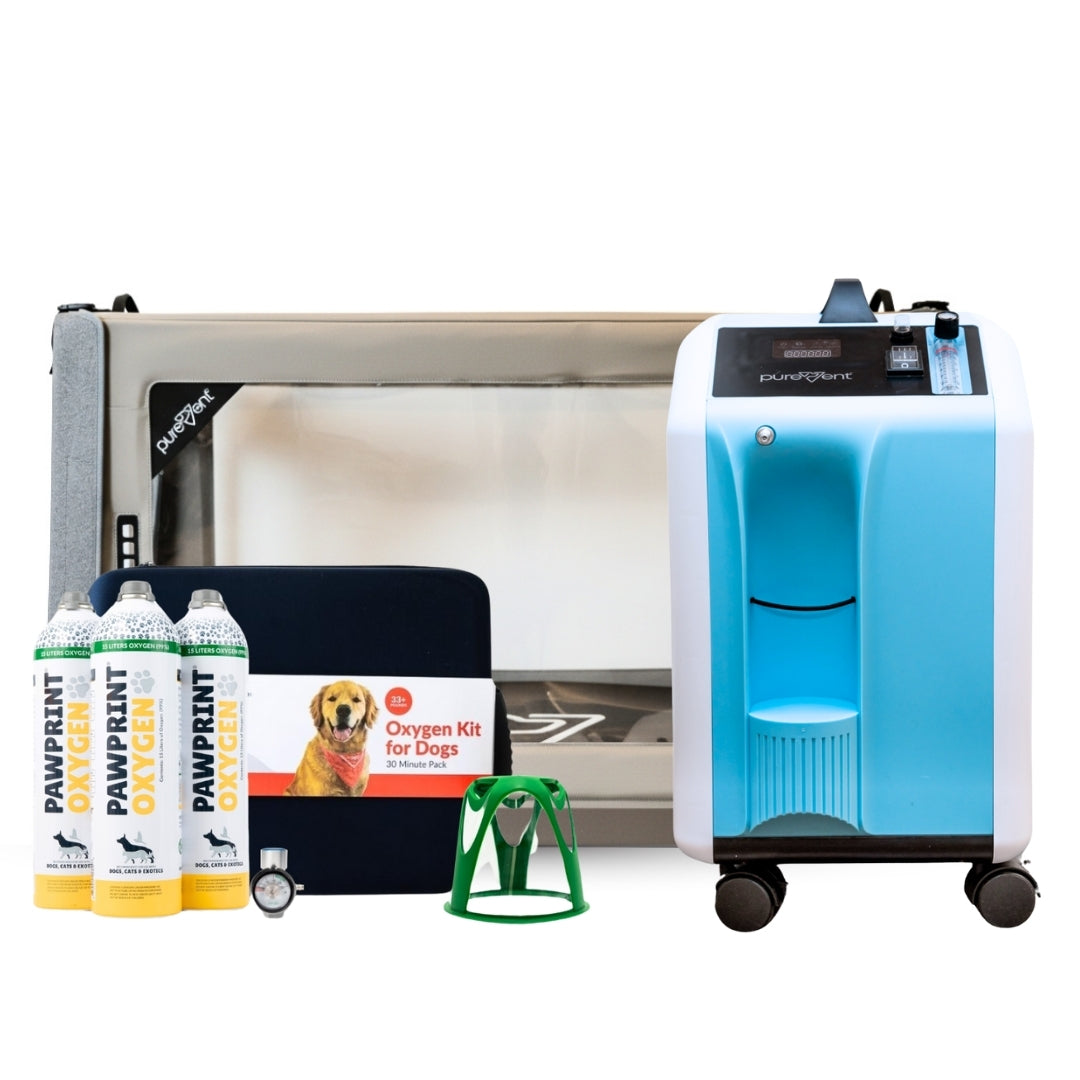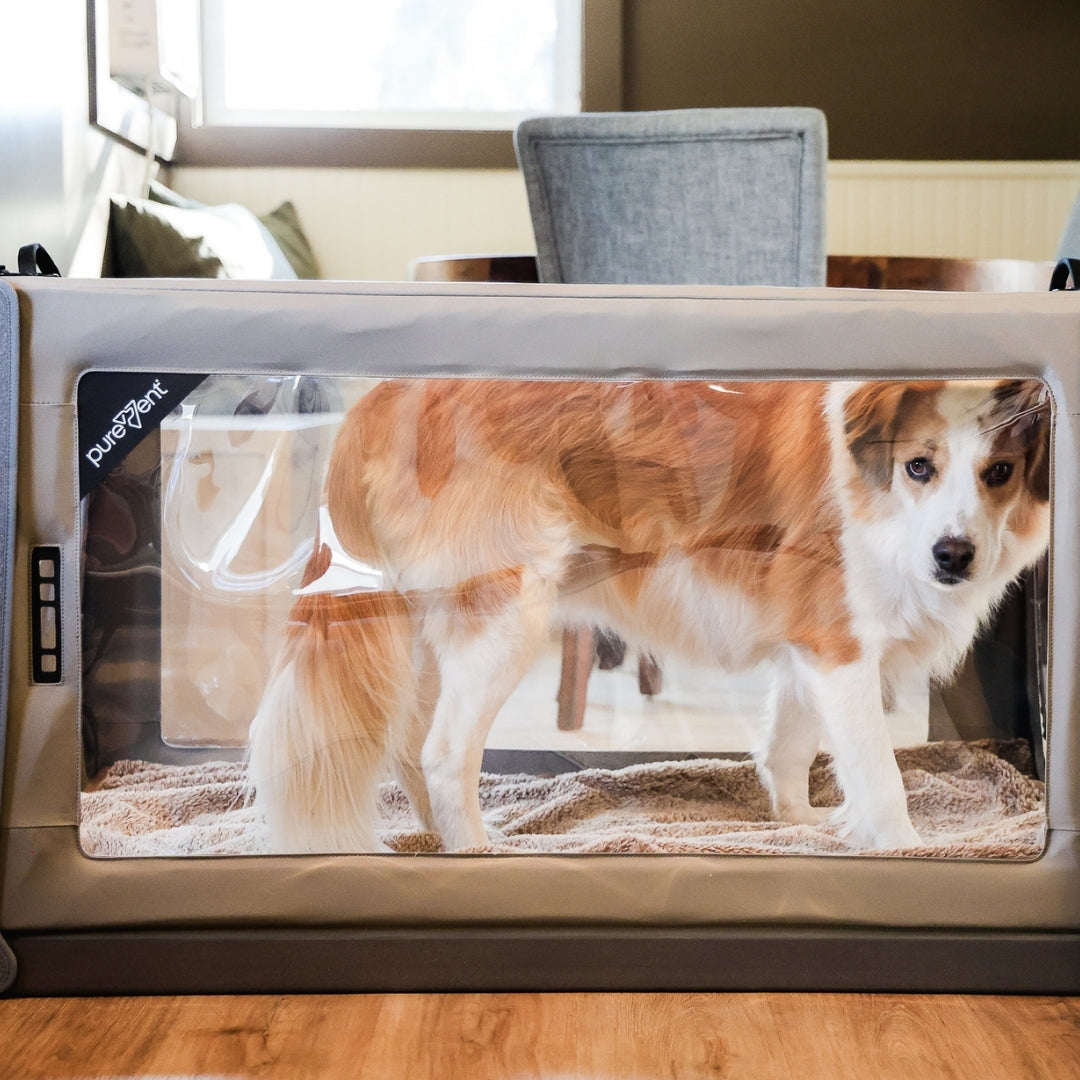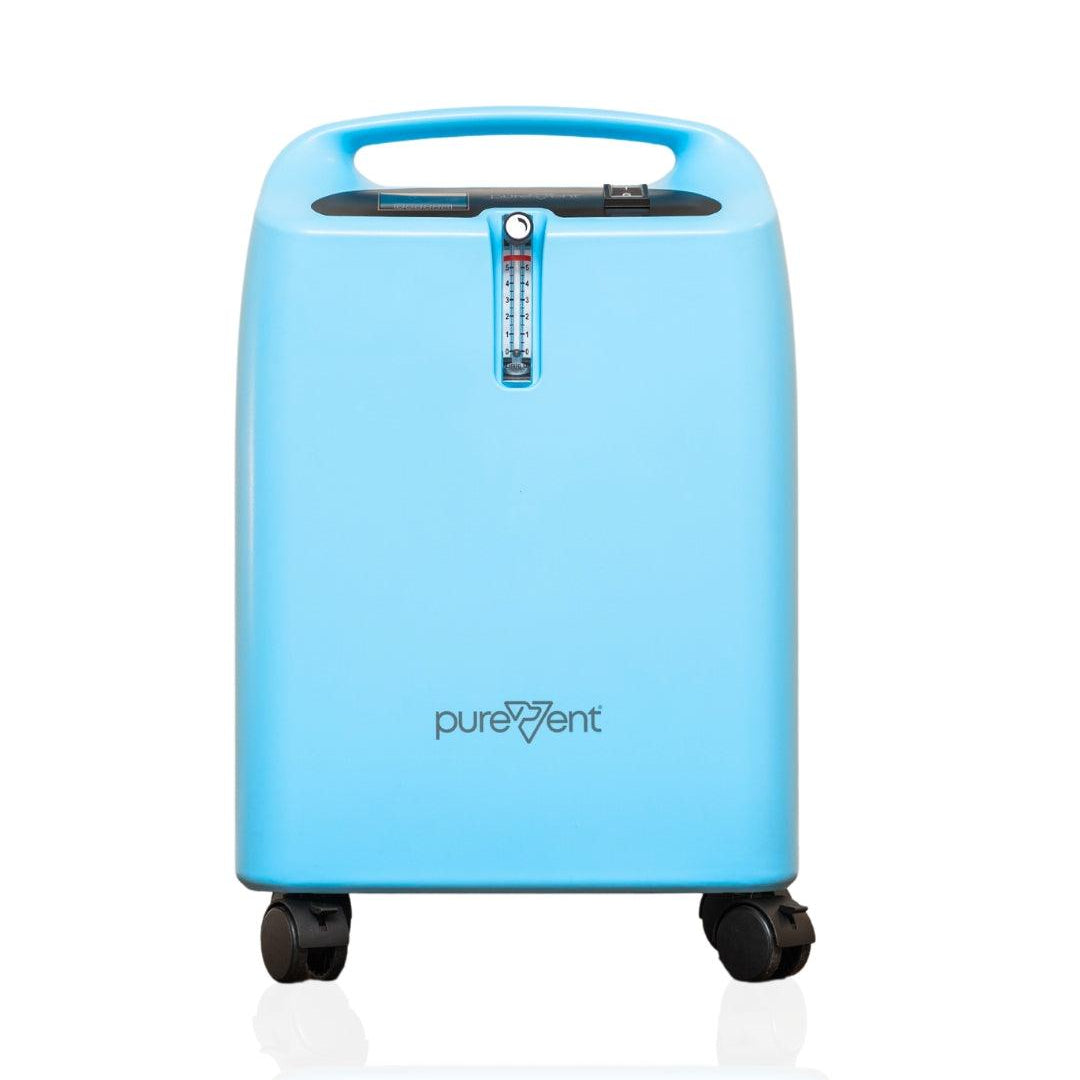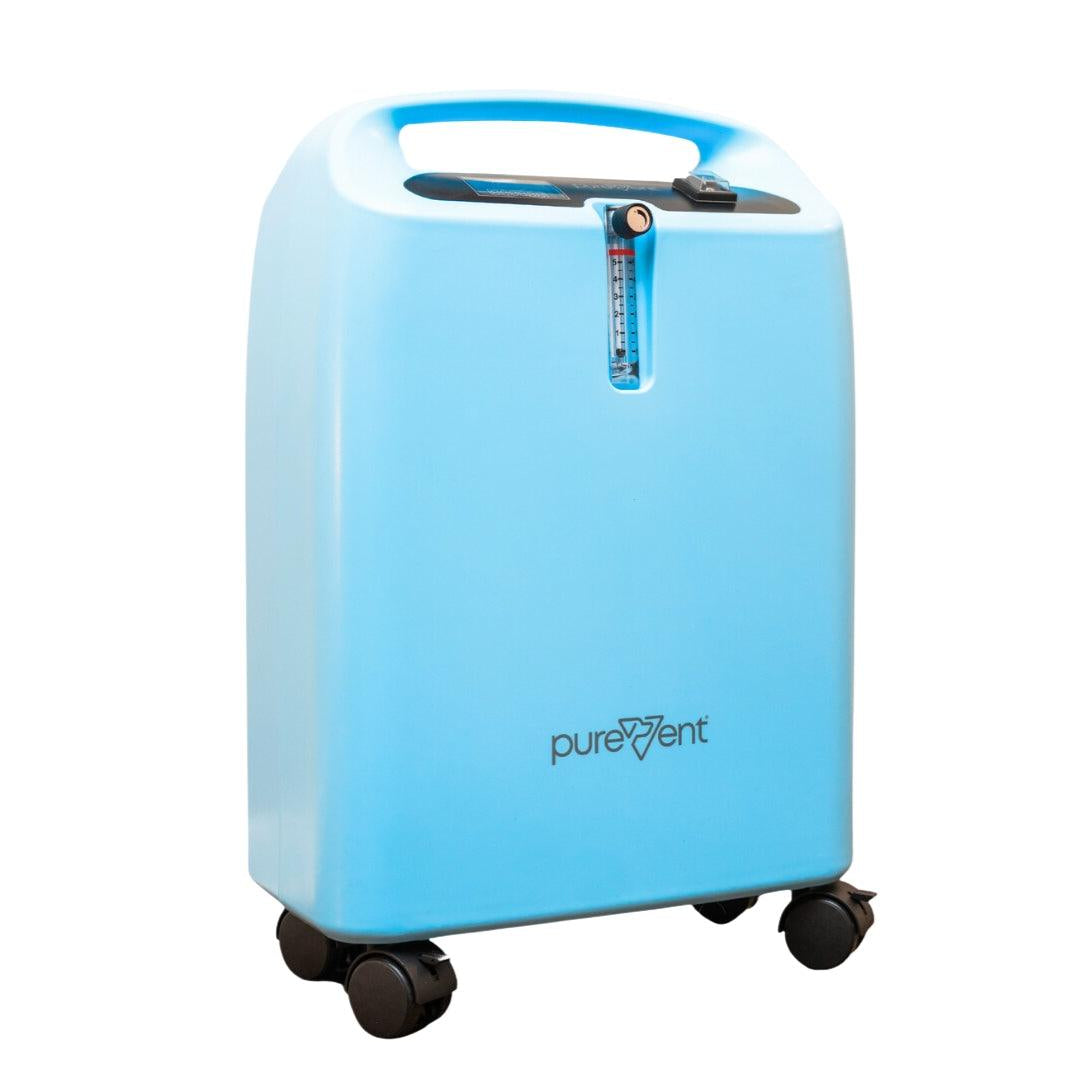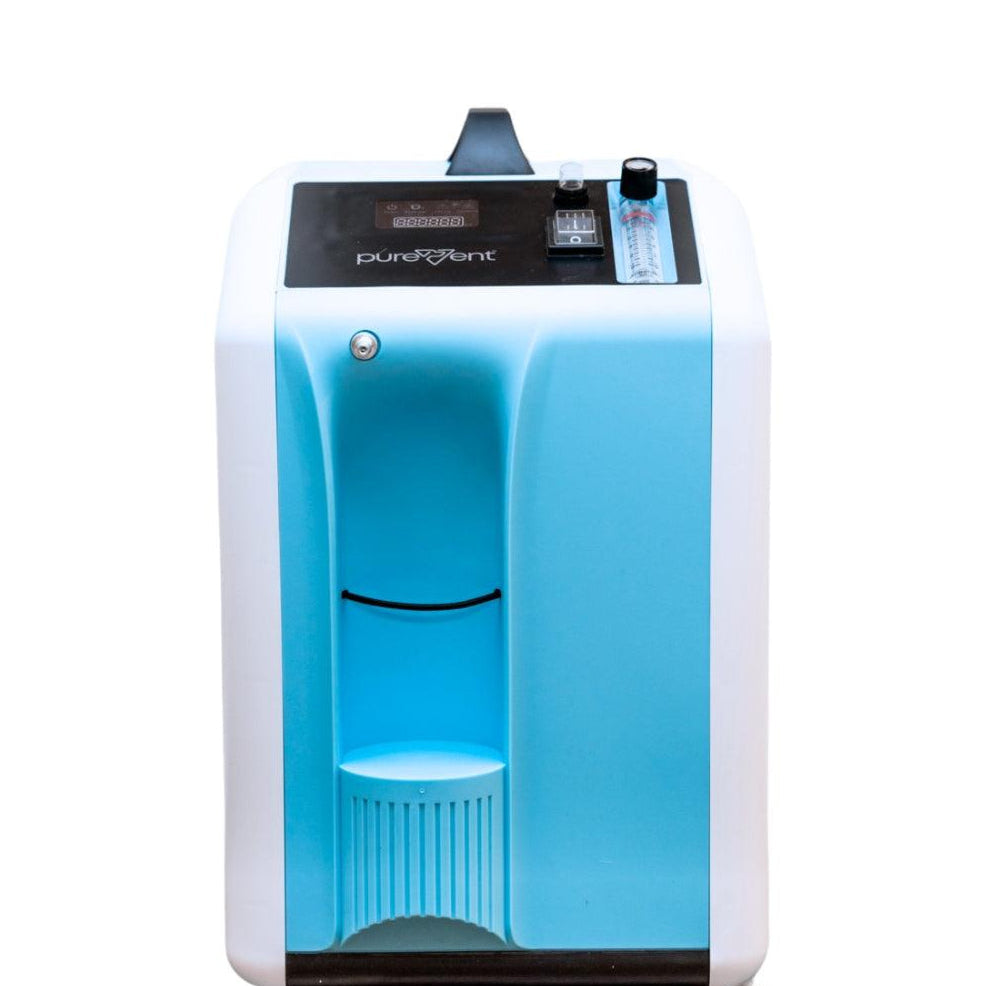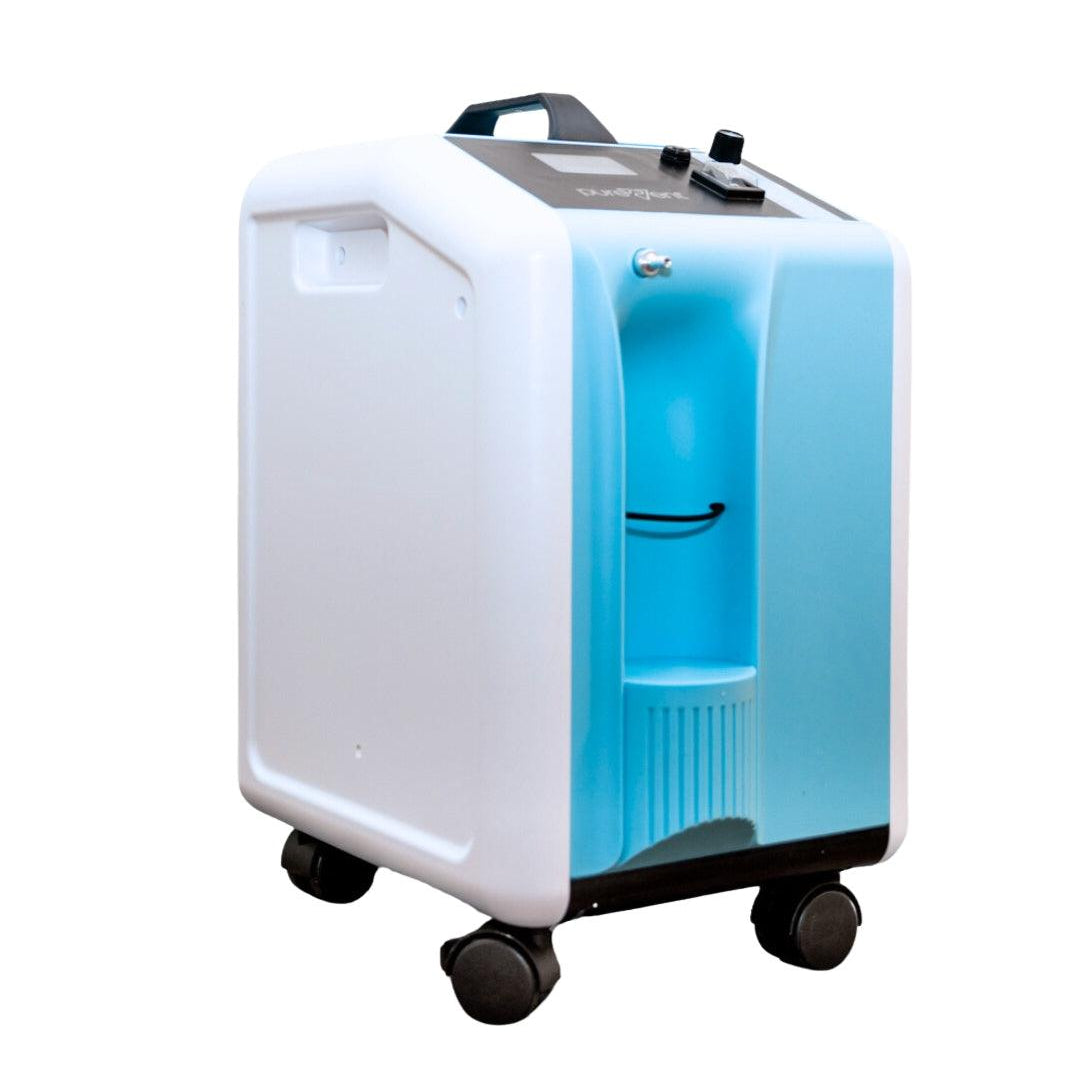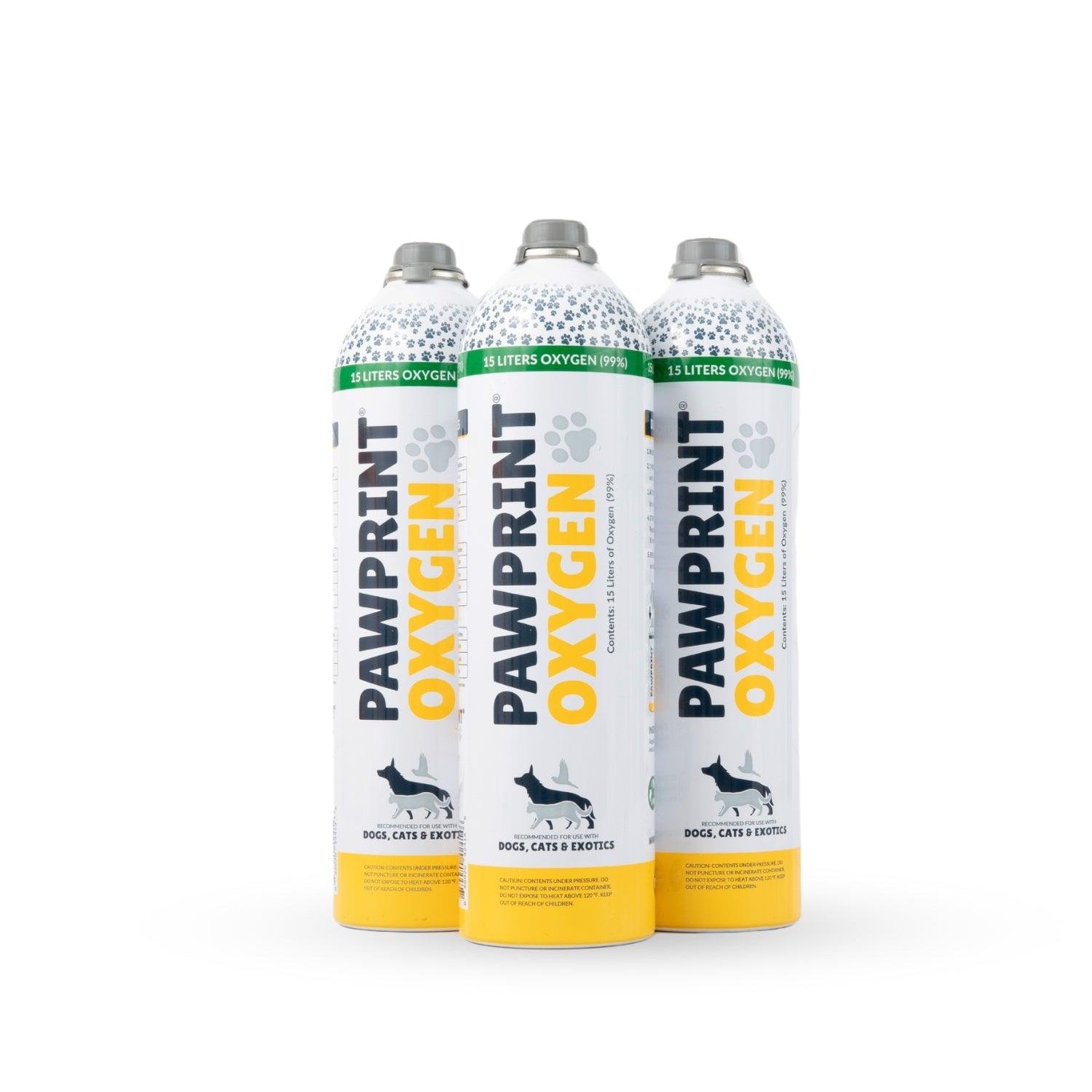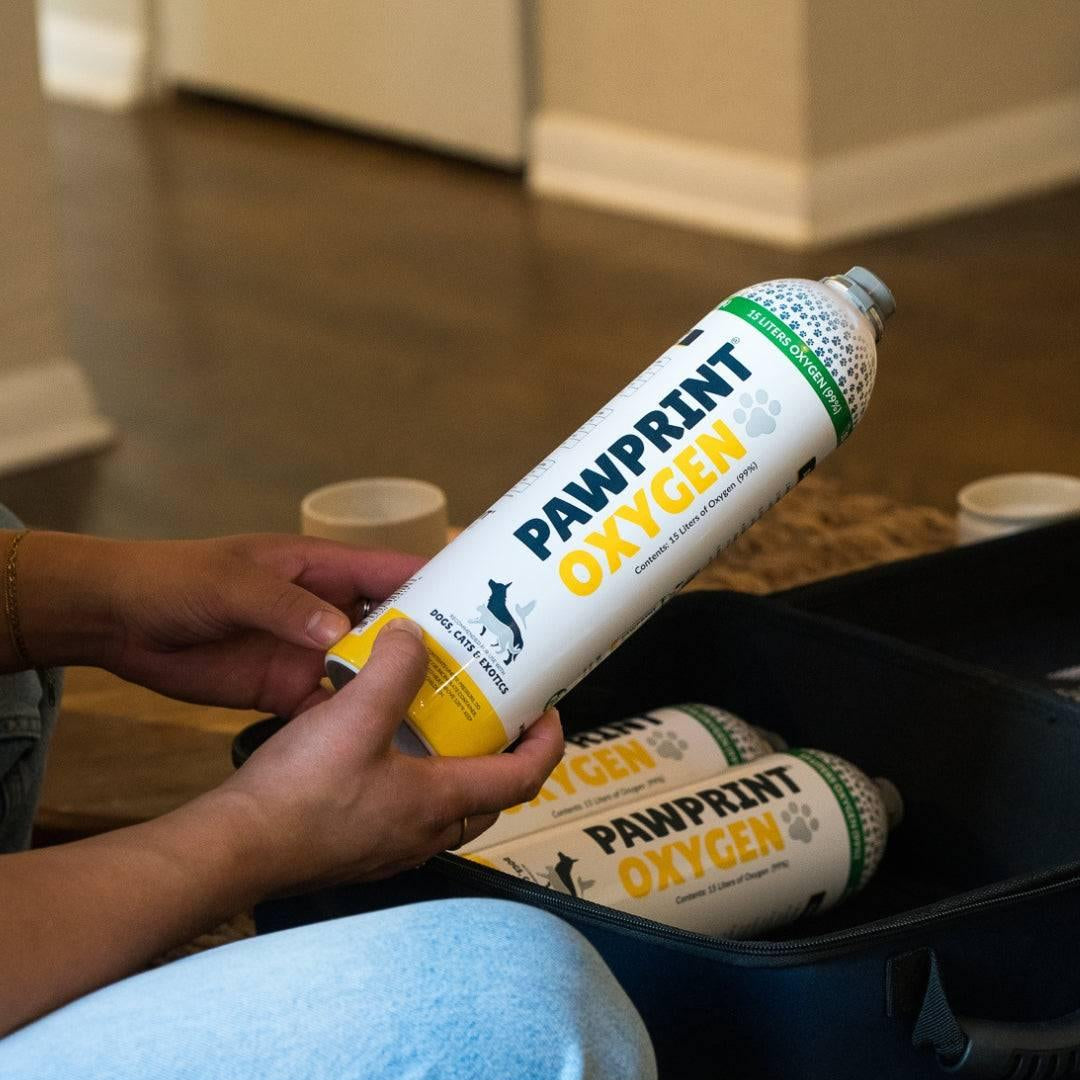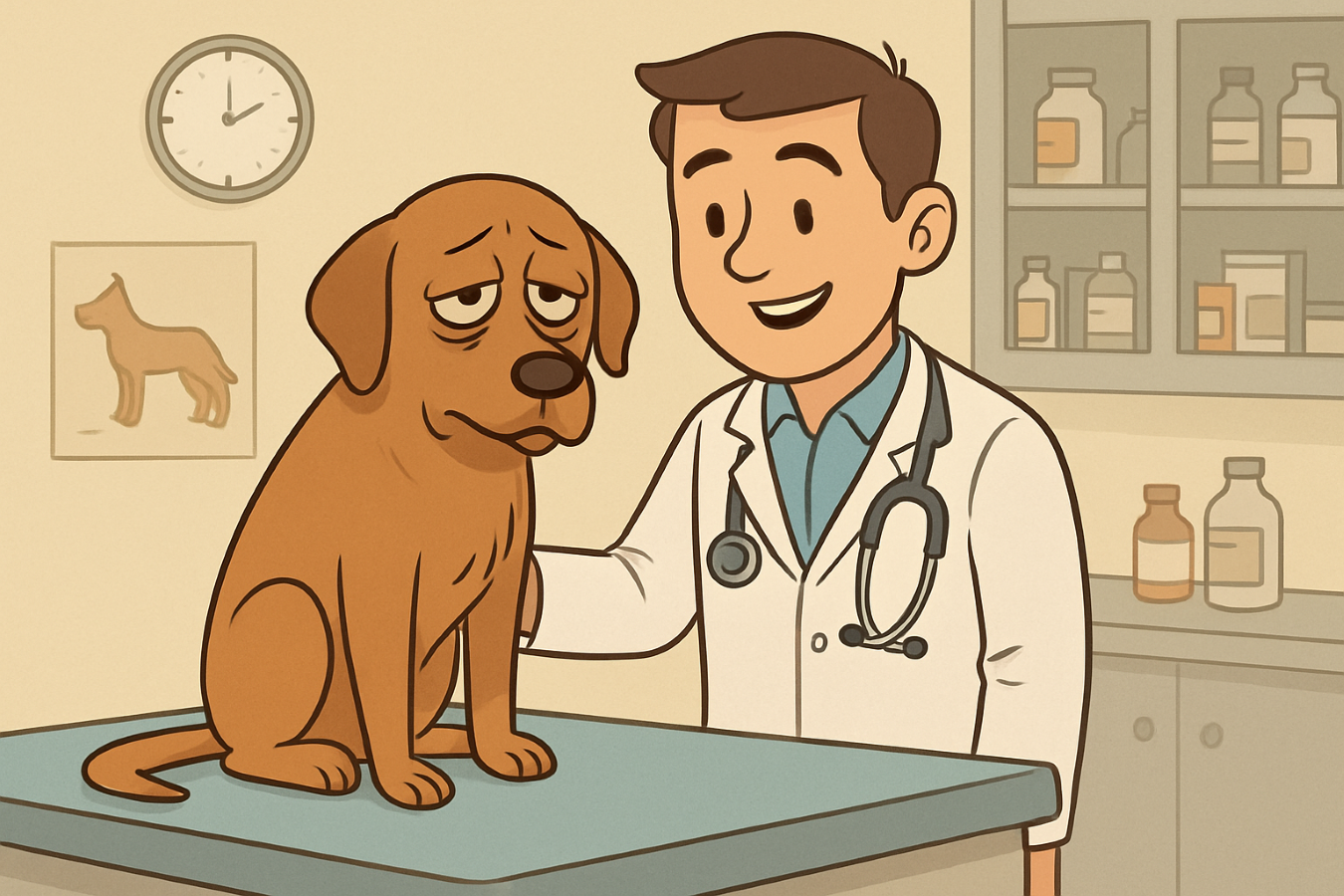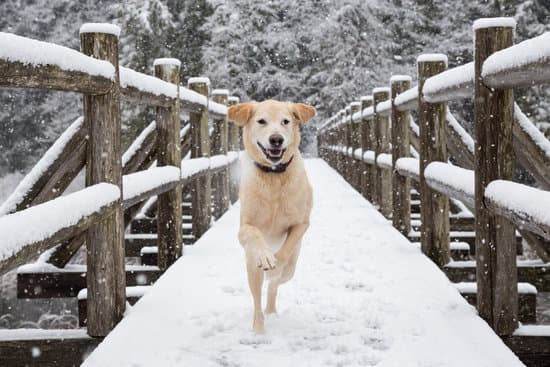As temperatures climb during the summer months, pets are at an increased risk of heat-related health issues. Unlike humans, dogs and cats have limited ways to regulate their body temperature, making them especially vulnerable to conditions like heatstroke, dehydration, and respiratory distress. For pets with underlying health concerns such as heart disease, asthma, or brachycephalic airway syndrome, extreme heat can quickly escalate into a life-threatening situation.
Oxygen therapy offers a critical line of support during these emergencies. By delivering concentrated oxygen, this treatment helps stabilize breathing, improve oxygen levels in the blood, and ease the strain on overworked organs.
In this article, we’ll explore how oxygen therapy can protect your pet during periods of extreme heat, identify which pets are most at risk, and show you how to prepare and respond when every breath counts.
Table of Contents

Understanding the Dangers of Extreme Heat for Pets
Extreme heat poses serious health risks for pets, especially when temperatures soar above 80°F (27°C) and humidity levels climb. Unlike humans, pets don’t sweat efficiently. Dogs primarily cool off through panting, and cats rely on grooming and limited sweat glands in their paws. When these cooling methods aren’t enough, body temperatures can rise dangerously fast, leading to heat exhaustion or even heatstroke.
Heatstroke is a medical emergency that occurs when a pet’s body temperature exceeds safe levels, often above 104°F (40°C). Signs include excessive panting, drooling, rapid heart rate, vomiting, disorientation, and collapse. Without immediate intervention, heatstroke can cause organ damage, brain swelling, and even death. Heat exhaustion, while less severe, is still dangerous and can quickly progress if not addressed.
Certain pets are particularly vulnerable to the effects of extreme heat:
- Brachycephalic breeds (such as Bulldogs, Pugs, Boxers, and Persian cats) have short nasal passages that limit airflow, making it difficult to cool themselves effectively.
- Senior pets and overweight animals often have reduced cardiovascular efficiency and limited ability to tolerate exertion or regulate temperature.
- Pets with respiratory or cardiac conditions (e.g., collapsing trachea, laryngeal paralysis, congestive heart failure) are at high risk because their bodies already struggle to maintain adequate oxygenation.
Humidity further complicates matters. On humid days, panting becomes less effective, as the moisture-laden air inhibits evaporation from the tongue and respiratory tract. Additionally, poor air quality caused by pollution, wildfires, or pollen can make it even harder for pets to breathe, increasing the risk of respiratory distress.
Understanding these risks is the first step in preventing heat-related emergencies and knowing how oxygen therapy can support your pet when symptoms arise is critical for a safe summer.
How Extreme Heat Affects Pets with Pre-existing Conditions
While high temperatures are dangerous for all pets, those with pre-existing health conditions are especially vulnerable during extreme heat. The added stress of elevated temperatures and humidity can quickly worsen underlying issues, often leading to a sudden and life-threatening decline.
Respiratory Conditions
Pets with chronic respiratory issues, such as collapsing trachea, asthma, or laryngeal paralysis, already have compromised airways. In hot weather, the effort required to breathe increases significantly. Panting, which is a pet’s natural cooling mechanism, becomes difficult or ineffective. This can lead to inadequate oxygen intake, triggering a downward spiral of anxiety, labored breathing, and eventual respiratory distress.
For example, a dog with a collapsing trachea may experience increased coughing, wheezing, or stridor when exposed to hot, humid air. Cats with feline asthma may have more frequent flare-ups, including coughing fits or open-mouth breathing, which are signs of a medical emergency.
Cardiac Conditions
Pets with congestive heart failure (CHF) or pulmonary hypertension are also at high risk during hot weather. Their cardiovascular systems are already working overtime to pump oxygen-rich blood throughout the body. When high temperatures cause vasodilation and fluid imbalance, the heart must work even harder. This increased demand can quickly overwhelm a failing heart, leading to fluid buildup in the lungs (pulmonary edema) and impaired oxygen exchange.
Even a short walk on a hot day can result in fatigue, cyanosis (bluish gums), or collapse in pets with heart disease. Without immediate intervention, including rest and oxygen therapy, their condition can deteriorate rapidly.
Oxygenation Challenges
In both respiratory and cardiac cases, the body’s ability to deliver oxygen to vital organs is impaired. Heat stress amplifies this issue, creating a dangerous cycle: poor oxygenation leads to organ strain, which worsens the underlying condition, further decreasing oxygen levels. This is where supplemental oxygen therapy becomes a powerful tool. By increasing the concentration of oxygen your pet breathes, you can ease their respiratory effort, reduce the load on the heart, and help restore stability during a heat-induced crisis.
Understanding how heat impacts your pet’s chronic health condition is essential for prevention. With proper monitoring and tools like oxygen therapy, you can protect your pet from the hidden dangers of summer weather.
What Is Oxygen Therapy and How Does It Work?
Oxygen therapy is a medical treatment that delivers concentrated oxygen to help support pets in respiratory distress or those suffering from reduced oxygen levels (hypoxemia). During extreme heat, a pet’s ability to breathe and oxygenate properly can become compromised, especially if they have an existing respiratory or cardiac condition. Supplemental oxygen helps restore oxygen saturation in the blood, reducing the effort required to breathe and preventing serious complications like organ damage or collapse.
How Oxygen Therapy Supports the Body
When a pet inhales pure or enriched oxygen, it increases the amount of oxygen that enters their bloodstream through the lungs. This helps compensate for conditions that impair breathing, such as airway obstructions, heart failure, or heat-induced inflammation. By boosting blood oxygen levels, oxygen therapy:
- Eases respiratory effort and reduces panting.
- Supports organ function by improving oxygen delivery to tissues.
- Decreases stress and anxiety caused by shortness of breath.

In-Clinic vs. At-Home Oxygen Therapy
Traditionally, oxygen therapy has been administered in a veterinary hospital, where pets are placed in oxygen cages or connected to medical-grade oxygen tanks. While effective, this approach can be stressful for pets, especially during emergencies when time is critical, and costly for pet owners.
Today, at-home oxygen therapy has become a more accessible and pet-friendly option. With at-home oxygen concentrators and pet-specific delivery systems like pet oxygen masks and chambers, owners can provide oxygen support right from the comfort of home. This is especially beneficial during heat waves, when immediate care may be needed and veterinary clinics are overwhelmed or far away. Portable oxygen kits are also available to pet owners, and allows owners to provide therapy at home or on-the-go.
Tools for Delivering Oxygen Therapy
There are several tools available to help pet parents safely administer oxygen therapy:
- Oxygen Concentrators: These devices filter and concentrate oxygen from ambient air. They’re ideal for ongoing at-home use and can deliver continuous oxygen to a pet chamber or mask.
- Pet Oxygen Chambers: Enclosed spaces designed for pets that allow for controlled, consistent oxygen delivery. Chambers are excellent for pets who are too anxious or distressed to tolerate a mask.
- Oxygen Masks: Specially designed masks that fit securely over a pet’s nose and mouth. These are useful for quick interventions or pets that can tolerate direct oxygen flow.
- Portable Rescue Oxygen Kits: Lightweight, pre-filled oxygen canisters with masks that are perfect for emergencies or travel. These kits are a great option to have on hand during extreme heat events or evacuations.
Together, these tools make oxygen therapy a flexible and effective way to support pets during heat-related respiratory crises. In the next section, we’ll discuss how to recognize when your pet may need oxygen support during a heat wave.
Signs Your Pet May Need Oxygen During a Heat Wave
Recognizing the early signs of heat-induced respiratory distress can make all the difference in protecting your pet’s health. During a heat wave, even healthy animals can struggle to breathe, but those with underlying conditions or poor heat tolerance are at especially high risk. Oxygen therapy can help stabilize your pet before their condition becomes critical, but knowing when to act is key.
Here are some common warning signs that your pet may need supplemental oxygen:
Excessive Panting or Open-Mouth Breathing in Cats: Panting is a dog’s natural way of cooling down, but excessive or frantic panting, especially if it continues at rest, is a red flag. Cats don’t normally pant, so open-mouth breathing in cats is always cause for concern. These signs indicate that your pet is struggling to regulate their temperature and may not be getting enough oxygen.
Blue or Gray Gums and Tongue (Cyanosis): Discoloration of the gums, tongue, or inner lips is a sign of low blood oxygen levels. A healthy pet’s gums should be pink; if they appear blue, gray, or pale, this indicates cyanosis which signifies a medical emergency that requires immediate oxygen therapy and veterinary care.
Lethargy, Weakness, or Collapse: If your pet suddenly becomes weak, disoriented, or unresponsive, it may be due to hypoxia, a lack of oxygen reaching the brain and other vital organs. These signs often develop quickly in extreme heat and may precede collapse or seizure if not addressed.
Rapid Heart Rate or Labored Breathing: An elevated heart rate or visible effort to breathe (heaving sides, flaring nostrils, neck extended) suggests that your pet is working too hard to get air. This can exhaust the body and lead to further complications, especially in pets with heart or lung conditions.
If you observe any of these symptoms, it’s critical to act fast. Move your pet to a cool, shaded area, offer water, and begin administering oxygen if you have the appropriate equipment on hand. Then, seek veterinary care immediately. Oxygen therapy can provide vital support while you stabilize your pet and transport them safely to a clinic.
In the next section, we’ll explore the specific benefits of oxygen therapy during extreme heat and how it supports your pet’s recovery.
Benefits of Oxygen Therapy in Extreme Heat
When pets begin to show signs of heat-related stress, time is of the essence. Oxygen therapy provides fast-acting, non-invasive support that can stabilize your pet while you take further steps to cool them down or seek veterinary care. Whether used in a crisis or as a proactive tool for at-risk pets, oxygen therapy offers several key benefits during extreme heat.
Immediate Relief from Respiratory Distress
The most critical benefit of oxygen therapy is its ability to relieve breathing difficulties quickly. By increasing the amount of oxygen in each breath, pets don’t have to work as hard to maintain normal blood oxygen levels. This reduces the panic and physical exhaustion caused by labored breathing, helping your pet calm down and recover more comfortably.
Prevents Progression to Heatstroke or Organ Damage
Prolonged oxygen deprivation can quickly lead to heatstroke, a life-threatening condition that affects the brain, liver, kidneys, and heart. Supplemental oxygen helps prevent this downward spiral by maintaining oxygen delivery to vital organs even as your pet’s natural cooling mechanisms begin to fail. Early intervention with oxygen therapy can help halt the progression of heat-related damage before it becomes irreversible.
Reduces the Burden on the Cardiovascular and Respiratory Systems
During extreme heat, a pet’s heart and lungs must work overtime to regulate temperature and oxygenate the body. For pets with underlying conditions like congestive heart failure or asthma, this extra strain can be overwhelming. Oxygen therapy lightens the workload on the heart and lungs, allowing them to function more efficiently while reducing the risk of acute episodes or collapse.
Buys Time for Transport or At-Home Stabilization
In many cases, oxygen therapy can bridge the gap between symptom onset and professional veterinary care. Whether you're waiting for a mobile vet, transporting your pet to a clinic, or managing a chronic condition under veterinary supervision, portable oxygen solutions like portable oxygen rescue kits provide critical support. For pets who are already under a veterinarian’s care, regular oxygen therapy sessions at home can be a valuable part of their summer safety plan.
By supporting your pet’s breathing and organ function, oxygen therapy can make a huge difference during heat emergencies. In the following sections, we’ll explore preparation tips and the best equipment options for keeping your pet safe during the hottest months of the year.
How does heatstroke affect dogs and cats differently?
While both dogs and cats are vulnerable to heatstroke, their physiology and behavior lead to different risk levels, symptoms, and responses to heat stress. Dogs are generally more susceptible to heatstroke due to their limited sweat glands, reliance on panting for cooling, and often higher levels of physical activity outdoors. Breeds with short snouts (brachycephalic breeds like Bulldogs, Pugs, and Boxers) are particularly prone to overheating because their airway anatomy makes effective panting more difficult. Dogs are also more likely to overexert themselves during play or walks, especially in hot weather, making them more prone to sudden onset of heat-related illness.
Cats, on the other hand, are more heat-tolerant by nature. They’re typically more sedentary during hot weather and are skilled at seeking out cool, shaded areas to rest. However, cats can still suffer from heatstroke, especially if they are trapped in hot environments like cars, garages, or poorly ventilated homes. Older cats, kittens, overweight cats, and those with underlying health conditions are more vulnerable. Unlike dogs, cats may not show obvious signs like heavy panting. Instead, they may exhibit subtler symptoms such as lethargy, drooling, rapid breathing, or vomiting, which can delay recognition and treatment.
Because the signs and severity of heatstroke can vary between dogs and cats, it’s important for pet owners to understand these species-specific differences. Early intervention and cooling, along with veterinary care, are critical in both cases—but owners should be especially vigilant with dogs during outdoor activity and with cats in enclosed, poorly ventilated indoor spaces.
Is it safe to walk my dog in hot weather?
Walking your dog in hot weather can be risky, especially during peak daytime temperatures. Dogs are more susceptible to heatstroke than humans because they don’t sweat like we do; instead, they rely on panting to cool down, which is far less effective in high heat or humidity. Walking during the hottest part of the day—typically between 10 a.m. and 4 p.m.—can put your dog at serious risk for overheating, especially if they’re older, overweight, have a short snout (like Pugs or Bulldogs), or have an underlying health condition.
To safely walk your dog in hot weather:
Choose early morning or late evening walks when temperatures are cooler.
Stick to shaded paths or grassy areas.
Bring water and take frequent breaks.
Watch for signs of heat stress like heavy panting, drooling, or slowing down.
If it’s too hot outside, consider mental stimulation indoors—like puzzle toys or training games—to help your dog burn energy safely.
How do I cool my pet down safely?
If your pet is showing signs of overheating—such as excessive panting, drooling, weakness, or disorientation—it's important to act quickly but calmly to bring their body temperature down without causing shock.
Here are safe steps to cool your pet:
Move to a Cooler Environment: Immediately get your pet out of the heat. Bring them indoors into air conditioning or into a shaded, well-ventilated area.
Offer Cool (Not Cold) Water: Provide small amounts of cool water to drink. Don’t force them to drink, and avoid ice-cold water, which can cause stomach upset or shock.
Use Cool, Wet Towels: Gently apply wet towels to your pet’s belly, armpits, and paw pads. Avoid covering their entire body, as this can trap heat. You can also wet their ears and paws to promote heat loss.
Use Fans or Air Circulation: Place a fan near your pet or use a gentle breeze from a window or AC vent to help evaporative cooling work more effectively.
Avoid Ice Baths or Ice Packs: Never immerse your pet in ice water or apply ice directly to the skin. This can constrict blood vessels and actually slow the cooling process.
Use Oxygen Therapy if Available: If your pet is having trouble breathing or showing signs of heatstroke, supplemental oxygen can help support oxygen delivery to tissues and reduce stress on the heart and lungs while cooling efforts continue.
Call Your Veterinarian: Even if your pet seems to improve, heatstroke can cause internal damage. Always consult your vet for further evaluation and care.
What treatments are available for pets with heatstroke?
Heatstroke is a life-threatening emergency, and immediate veterinary care is essential. The goal of treatment is to reduce your pet’s body temperature safely, restore hydration, and address any damage to organs or tissues caused by the heat.
Here are the most common treatments for pets with heatstroke:
Active Cooling: Vets will begin controlled cooling using cool (not cold) IV fluids, wet towels, fans, and alcohol on paw pads. Rapid cooling must be done carefully to avoid causing shock or hypothermia.
Intravenous (IV) Fluids: These help rehydrate the pet, stabilize blood pressure, and support circulation. They also assist in bringing down body temperature from the inside out.
Oxygen Therapy: If your pet is having trouble breathing or is oxygen-deprived due to heat-related complications, supplemental oxygen therapy helps improve tissue oxygenation and reduce strain on the heart and lungs.
Medications: Your vet may administer drugs to reduce swelling, treat seizures, control vomiting or diarrhea, and protect organ function. Anti-inflammatories or antibiotics may also be used depending on severity.
Monitoring and Supportive Care: Pets with heatstroke often need hospitalization for close monitoring of heart rate, breathing, temperature, and bloodwork to assess for kidney failure, clotting issues, or organ damage.
Bloodwork and Diagnostic Imaging: Blood tests and possibly x-rays or ultrasound may be used to assess organ damage and guide treatment decisions.
The earlier a pet receives treatment, the better the prognosis. Even after stabilization, follow-up care may be required to monitor for long-term complications. Always seek emergency veterinary help if you suspect your pet is suffering from heatstroke.
How to Prepare Your Home for Summer Pet Safety
When it comes to protecting your pet during extreme heat, preparation is key. High temperatures can lead to rapid health deterioration, especially in pets with underlying conditions. By taking a few proactive steps, you can create a safe, cool environment that minimizes risk and ensures you’re ready to respond if a heat-related emergency occurs.
Keep Cool Spaces and Hydration Accessible
Always ensure your pet has access to shade and well-ventilated areas indoors and outdoors. Cooling mats, tile floors, and shaded patios can offer relief from direct sun and hot surfaces. Fresh, clean water should be available at all times, and in multiple locations if you have a larger home or yard. For picky drinkers, adding ice cubes or low-sodium broth can encourage hydration.
Use of Fans and Air Conditioning
Air conditioning is one of the most effective ways to regulate indoor temperatures, but even fans and open windows can make a difference. Set up circulating fans in areas where your pet rests, and never leave pets in a hot room, or worse, a parked car, without air movement. For pets that are home alone during the day, consider leaving the A/C on a timer or using a pet-safe cooling system.
Keep Oxygen Therapy Equipment on Hand for High-Risk Pets
If your pet is prone to respiratory or cardiac issues, it’s wise to have oxygen therapy equipment available before an emergency arises. This may include:
- An oxygen concentrator paired with a pet oxygen mask or chamber for in-home use.
- A portable pet rescue oxygen kit for quick intervention or transport during a crisis.
- Clear instructions from your veterinarian on how and when to use each setup.
Having these tools ready can buy critical time and reduce panic when your pet begins to show signs of heat-related distress.
Emergency Planning
Just as you would prepare for storms or power outages, having a summer emergency plan for your pet is essential. Make a checklist that includes:
- The location and phone number of your nearest emergency veterinary clinic.
- A go-bag with medications, medical records, cooling supplies, and a rescue oxygen kit.
- A plan for safe transport, especially if you live in a remote area or have limited mobility.
Additionally, inform pet sitters, dog walkers, or neighbors of your pet’s health risks and the location of emergency supplies, especially if you’ll be away during the summer months.
By preparing your home and having the right tools in place, you can dramatically reduce the chances of heat-related emergencies and ensure a safer, more comfortable summer for your pet. In the next section, we’ll explore the different types of oxygen therapy equipment and how to choose what’s best for your pet’s needs.
Choosing the Right Oxygen Therapy Equipment
Not all oxygen therapy setups are created equal, especially when it comes to treating pets during extreme heat. Whether you're managing a chronic condition or preparing for a possible heat emergency, it's important to choose the equipment that best fits your pet’s size, medical needs, and environment. Having the right tools on hand ensures you can act quickly and confidently when your pet needs respiratory support.
At-Home Oxygen Concentrators vs. Portable Rescue Kits
There are two primary types of oxygen delivery systems pet owners can use at home:
- Oxygen Concentrators: These are electric-powered devices that extract oxygen from the surrounding air, providing a continuous supply without the need for refillable tanks. Concentrators are ideal for pets with chronic respiratory or cardiac conditions who may need repeated therapy sessions or longer durations of oxygen support. When paired with a pet oxygen mask or chamber, they offer a reliable, long-term solution for in-home care.
- Portable Rescue Oxygen Kits: These kits are designed for emergency use and include pre-filled medical-grade oxygen in lightweight canisters. They include a pet-specific mask and are easy to use during sudden respiratory distress or while traveling. These kits are particularly useful during heat waves, evacuations, or transport to the vet, offering immediate relief while you get your pet to professional care.
Chamber vs. Mask Administration
The method of oxygen delivery can significantly impact how well your pet tolerates therapy:
- Pet Oxygen Chambers: These enclosed spaces are great for anxious or small pets, as they allow the pet to breathe freely in a controlled environment without needing a mask. Chambers are often recommended for cats or dogs who won’t tolerate direct oxygen application. Chambers can only be used along with oxygen concentrators, so they cannot be used in transport.
- Oxygen Masks: Designed to fit securely over your pet’s nose and mouth, masks deliver a higher concentration of oxygen directly and are ideal for short, urgent treatments. Masks work well for pets that are cooperative or conscious but struggling to breathe, and are also the go-to option for use with portable rescue kits.
Each delivery method has its place, and the best option often depends on your pet’s temperament, condition, and the urgency of the situation.

The Importance of Veterinary Guidance
While oxygen rescue kits can be purchased without a prescription for emergency use, oxygen concentrators for long-term oxygen therapy require veterinary involvement. Your veterinarian will assess your pet’s condition, determine the appropriate flow rate, and guide you on when and how to administer therapy safely. They can also help you select the right equipment and train you on proper usage and maintenance.
Veterinary guidance ensures that oxygen therapy is both effective and safe, especially for pets with complex health needs or ongoing treatment plans.
With the right oxygen therapy tools and professional support, you can respond quickly to heat-related emergencies and provide ongoing care for pets with chronic conditions. In the next section, we’ll go over safety tips to ensure your pet receives oxygen therapy in the most effective and stress-free way possible.
Safety Tips for Administering Oxygen at Home
While oxygen therapy can be a crucial tool during extreme heat, it’s important to administer it safely and correctly. Proper use ensures your pet gets the support they need without added stress or risk. Below are essential safety tips to keep in mind when using oxygen therapy at home.
Always Follow Veterinary Recommendations
Your veterinarian should always be your first point of contact when introducing oxygen therapy into your pet’s care. They will provide specific guidance on:
- When to administer oxygen.
- The correct flow rate and duration based on your pet’s condition.
- How to monitor your pet’s response to treatment.
Using oxygen without professional oversight can lead to under- or over-treatment, both of which carry risks. For pets with chronic issues, your vet may also recommend a home pulse oximeter or periodic rechecks to monitor oxygen levels over time.
Avoid Overuse: Monitor for Oxygen Toxicity and Stress
While oxygen is critical in emergencies, too much oxygen for too long can cause toxicity, especially at high concentrations. Prolonged exposure may damage lung tissue or suppress breathing in certain conditions.
Always:
- Stick to prescribed treatment durations.
- Watch for signs of discomfort, restlessness, or agitation during therapy, which could indicate overstimulation or stress.
- Allow breaks during longer sessions, and never leave your pet unattended while using oxygen equipment.

Ensure Proper Ventilation When Using Oxygen Chambers
Oxygen chambers are effective, but they must be well-ventilated and properly designed to prevent dangerous oxygen buildup or carbon dioxide retention. Look for veterinary-grade chambers, like the PureVent Pet Oxygen Chamber, with built-in airflow systems and passive ventilation like venturi adapters, which help regulate oxygen levels and keep the air safe and breathable.
Avoid sealing your pet into enclosed spaces (like plastic bins or makeshift containers) with oxygen flow as this can create unsafe conditions and cause more harm than good. If you’re unsure about your setup, ask your veterinarian or the equipment provider for a demonstration or setup guide.
By following these safety practices, you can confidently support your pet with oxygen therapy at home, especially when extreme heat strikes. In the final section, we’ll recap everything we’ve covered and offer guidance on taking the next steps to prepare your home and pet for summer safety.
Keeping Your Pets Cool and Healthy
As summer temperatures rise, so do the risks to your pet’s health, especially for those with underlying respiratory or cardiac conditions. Oxygen therapy is a powerful, accessible tool that can provide immediate relief during heat-related emergencies, support ongoing care for high-risk pets, and even save lives when every second counts.
By understanding the signs of heat-related distress, preparing your home with cooling strategies and oxygen equipment, and working closely with your veterinarian, you can give your pet the best chance at staying safe and comfortable through the hottest months of the year.
If your pet has a history of breathing issues, heart disease, or heat sensitivity, talk to your veterinarian about whether oxygen therapy should be part of your emergency plan. The peace of mind and the ability to act quickly can make all the difference.
For additional tips on preventing heatstroke and keeping your pet safe during the summer, visit the ASPCA Hot Weather Safety Tips Guide.
Key Points
Extreme heat can trigger life-threatening conditions in pets, especially those with respiratory or heart issues. Recognizing early signs of distress, like excessive panting, blue gums, or lethargy, is critical.
Oxygen therapy provides immediate relief by increasing oxygen levels in the blood, easing respiratory effort, and reducing the risk of heatstroke or organ damage.
At-home oxygen equipment, including concentrators, oxygen chambers, and portable rescue kits, makes it possible to respond quickly during heat-related emergencies.
Different delivery methods (chambers vs. masks) serve different needs, and the right choice depends on your pet’s size, temperament, and condition.
Safe use of oxygen therapy requires veterinary guidance, especially for chronic conditions. Overuse or improper setup can lead to oxygen toxicity or unsafe oxygen levels.
Preparation is key: keep your home cool, have emergency oxygen kits ready, and know where your nearest emergency vet clinic is located.
